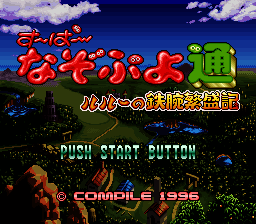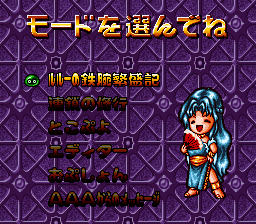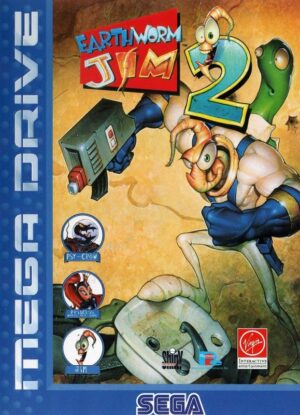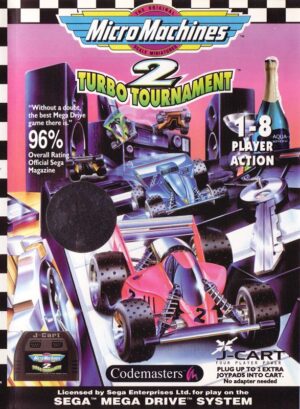Retro Replay Review
Gameplay
Building on the legacy of the original Super Nazo Puyo, Rulue no Tetsuwan Hanjōki takes the classic Puyo Puyo formula and weaves it into a light RPG framework. You guide Rulue across an overworld map, interacting with villagers, accepting quests, and stumbling into Nazo Puyo puzzles that must be solved within tight time limits. This blend of top‐down exploration and frantic, scenario‐based puzzling gives each encounter a distinct flavor compared to the standard endless chain battles.
Exploration is straightforward: Rulue moves from town to town chatting with NPCs, gathering hints, and unlocking side‐quests. When a puzzle triggers, you’re dropped into a preset field where colored puyos are already arranged in patterns designed to test your chaining instincts. Objectives vary — clear all blue puyos in 30 seconds, perform a three‐chain combo, or dismantle a rainbow cluster — forcing you to adapt your approach rather than rely on endless random drops.
Random monster encounters shift the pace once more, launching you into head‐to‐head duels straight out of classic Puyo Puyo. Here, each side has its own grid, and you race to trigger the most garbage puyo on your opponent. These battles feel precise and tense, rewarding foresight and efficient chaining, and they serve as fun diversions from exploration puzzles.
Rulue also gains new abilities as you progress, such as speed boosts on the overworld or special “power puyo” that change the field layout mid‐match. While these RPG trappings won’t satisfy hardcore role‐players, they do add a modest sense of progression. Overall, the gameplay loop—explore, puzzle, duel, repeat—remains addictive and strikes a nice balance between leisurely map traversal and pulse-pounding puzzle action.
Graphics
On the Super Famicom hardware, Rulue no Tetsuwan Hanjōki offers bright, cheerful pixel art that pops off the screen. Character sprites are wonderfully expressive—Rulue’s confident grin and fluttering ribbons give her personality even in the world map’s limited resolution. NPC portraits peppered into dialogue boxes add a manga-style flair that keeps interaction scenes visually engaging.
The overworld tilesets draw from classic JRPG palettes: rolling green plains, cozy village cottages, and shadowy caves. Though they reuse assets from earlier Puyo spin-offs, the color choices feel fresh, especially when contrasted with the bold puzzle arenas. In Nazo Puyo challenges, the background illustrations change to match the quest theme, whether it’s a fiery volcano or a misty forest clearing.
Puyo animations themselves are smooth and snappy. Chains trigger satisfying burst effects and colorful trails, with sound cues that nail the arcade mood. Transitioning between exploration and puzzle screens is seamless, and load times are minimal, ensuring you stay immersed in both the world and its brain-bending challenges.
Story
Rulue’s adventure is a lighthearted romp rather than an epic saga. She sets out to prove her martial arts prowess, but soon finds herself entangled in local mysteries—from rescuing a missing merchant to helping a village lift a curse. Dialogue is simple and often tongue-in-cheek, with comedic asides that nod to fans of the Puyo franchise.
Boss characters appear as both puzzle masters and verbal sparring partners. Each villain’s introduction plays like a short skit: a boastful warlord challenging Rulue to a timed puyo trial, or a mischievous witch setting bizarre clearing conditions. These set-piece moments break up the grind and give the puzzles a sense of narrative purpose.
While the overarching plot never dives into deep drama, it’s perfectly serviceable for a spin-off puzzle RPG. If you’re looking for rich character arcs or political intrigue, you’ll be disappointed—but if you want a fun backdrop for clever puzzle design, the story hits the mark.
Overall Experience
Super Nazo Puyo Tsū: Rulue no Tetsuwan Hanjōki succeeds as a quirky hybrid, offering enough exploration to keep the pace varied and enough puzzle variety to maintain challenge. The combination of scenario puzzles and real-time Puyo duels ensures that even longtime series fans won’t feel like they’re doing the same thing twice.
Difficulty ramps up smoothly, but some later Nazo Puyo stages require lightning-fast decisions—be prepared to replay certain sections multiple times. Nevertheless, the game’s forgiving respawn points and clearly communicated objectives make it far less punishing than many other puzzle titles of its era.
Ultimately, this spin-off is a delightful treat for both puzzle enthusiasts and retro gaming collectors. Its charming visuals, clever quest design, and addictive chaining mechanics make it a standout entry in the Puyo lineage. Whether you’re brand-new to Rulue’s world or a veteran puyo-stacker, you’ll find plenty to enjoy in this colorful adventure.
 Retro Replay Retro Replay gaming reviews, news, emulation, geek stuff and more!
Retro Replay Retro Replay gaming reviews, news, emulation, geek stuff and more!





Reviews
There are no reviews yet.